Farmed to hell?
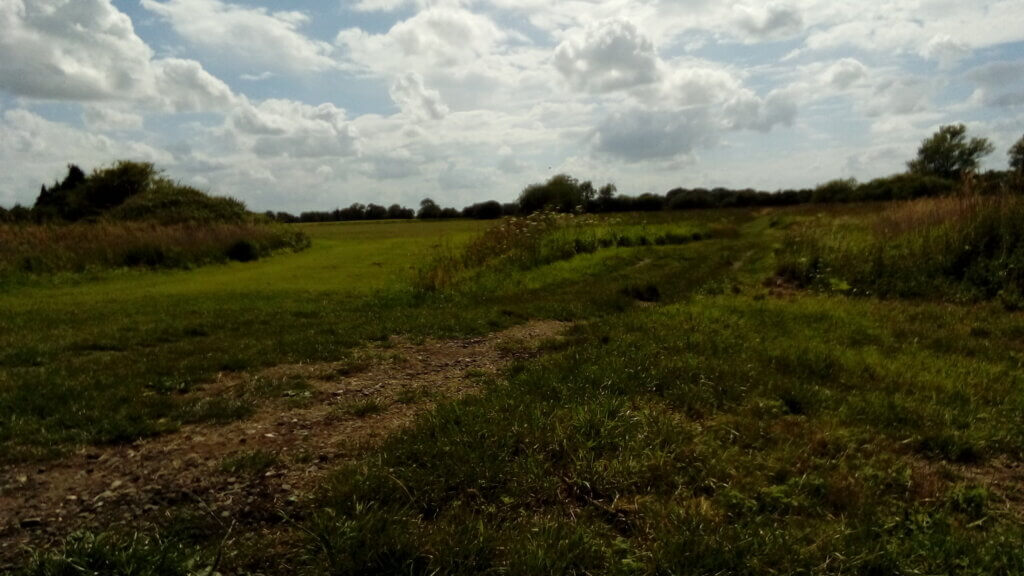
I spend a lot of my time in the farmed environment. I live surrounded by arable, and have to pass through it to get anywhere. At work recently (I work in the Polar Data Centre at British Antarctic Survey) we had a midsummer solstice challenge for running/walking, simply personal achievement, nothing else…..
Now I like a challenge and decided to go for the max distance in the challenge, the 100km. I decided to do it over 2 days, 22nd and 23rd June (50km (30 miles) each day, with a break eating/sleeping at home) and planned a figure-of-eight loop to several local nature reserves and other favourite places. This meant that I walked through an awful lot of farmland. An awful lot of pretty awful farmland.
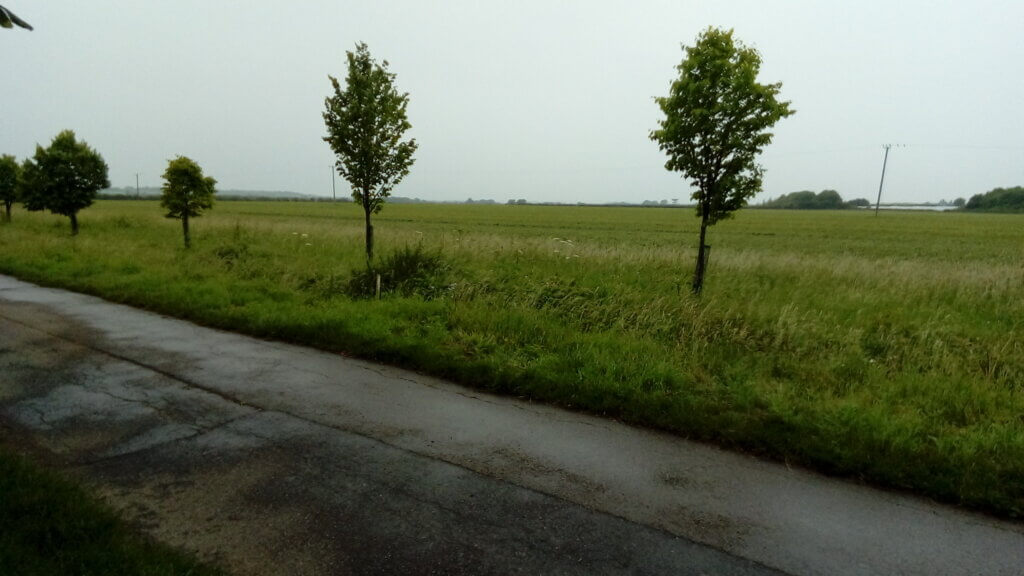
I survey for farmers, chat to farmers, and understand farming. I have pottered and poked about in the farmed landscape for two decades. I recall being able to note the occasional arable weed (of the commoner species) in the field edges on surveys or walks, and paths would be a narrow path on the surface of the field. My weekend took in many bridleways, permissive paths and byway tracks. Most of the routes have either been mown to 5m wide minimum, or hard-surfaced. The cereal fields have been sprayed for about 50cm each side of this strip, and no weeds visible there or further out into the fields. Sanitised, probably for the benefit of better yields. I had always thought this first metre of the crop away from the field edge or margin was interesting for what else survived there, providing food to other wildlife, but this season there seems to be a stricter regime spraying out anything that has the audacity of trying to exist in amongst cereal.
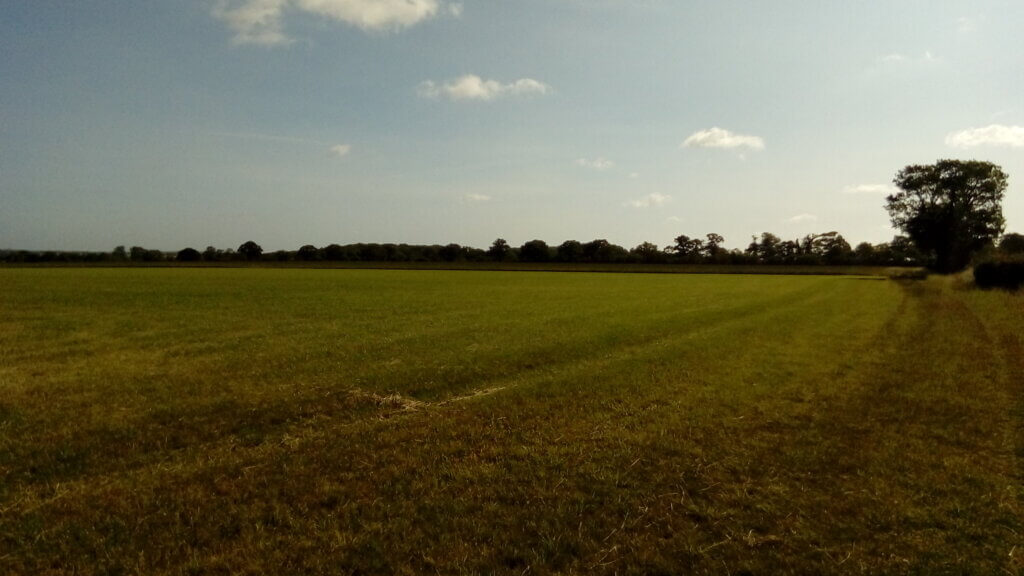
I know I used to find plants like scarlet pimpernel and scentless mayweed, not rarities, but fairly common plants. Now, nothing, just scorched grass and cereal edge, absolutely nothing growing. In terms of birds, there are still a few Skylarks, Yellowhammers and, on the chalky-soil sections, Corn Buntings, singing, but I really came to realise that farming has shifted a gear again locally, to something more brutally monocultural and intensive than it ever has been. I truly fear that this will be another nail in the coffin of those creatures which rely on insects and weeds in the wider farmed landscape. If the pressure to produce is this high, what future any wildlife?
I hope the new ELMS can counter this new trend by providing incentive to having more relaxed areas through the whole landscape. Where there are ditches or hedges alongside paths, the plants growing are usually nettle, bramble, coarse grasses such as False oat grass, Sterile brome, occasional perennial rye, with small patches of mallow and hedge bedstraw clinging on…. nothing which wouldn’t be classified as a ruderal weed by most botanists and few pollen/nectar/invertebrate resources.
Some of the large agribusiness have really put effort into permissive access and ‘improving’ the public rights of way, a lot of time and money, including to some river-side grasslands which were not ablaze with flowers and had a path to rightly contain any passing human interested in the field; I feel even more unsure over what actual benefit this gives us…….
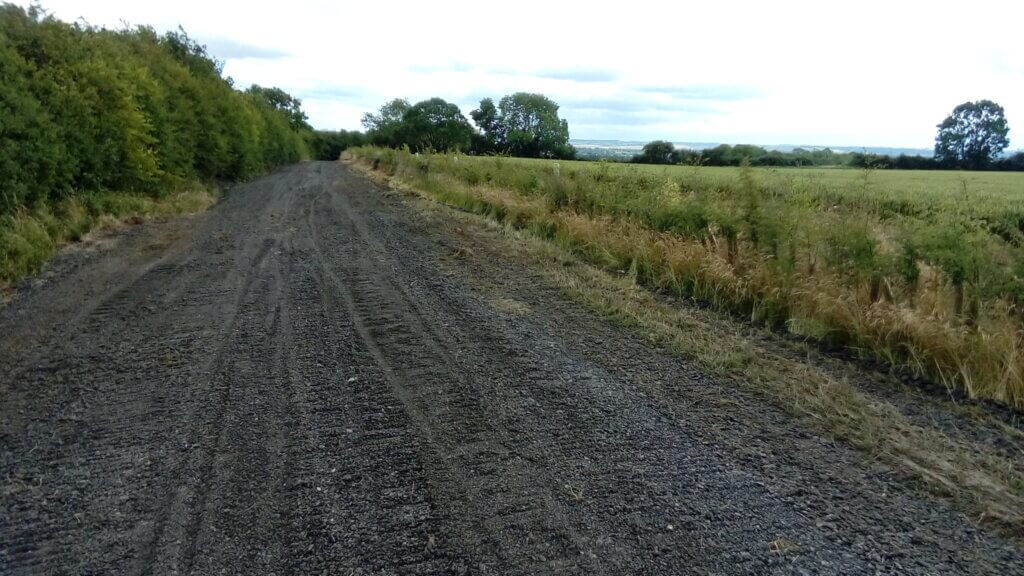
The hard-surfaced byways and bridleways mean that they have undoubtedly greater appeal to the urban folk accessing the countryside, so they don’t get their shiny boots or canvas shoes muddy, who need the reassurance of something securely urban. Many of the farms seem to need to surface some of these tracks for their own access, not wanting to break the surface in the extremely wet winters we sometimes get now (but I always thought the appeal of the local byways was their outrageous filthy ankle-deep mud in late winter). Byway restrictions are on nearly all of those I walked, and although they are usually open in high summer, all were locked closed. Presumably there has been an increase in opportunistic access, maybe illicit activities and general dumping of household renovation waste, hedge clippings etc. The road-planings used as the new surfacing have been dumped and rolled the full width of the byway….. no longer are they interesting green connections between villages, nature reserves, etc. but hard-surfaces sterile highways…….
My route was usually 5-10km of walking through the landscape between each of the reserves, and this also shows the isolation of many of our better parcels of land from each other; musing on whatever happened to ‘bigger, better, more and joined’ (Lawton report) became a bit of a theme on the tougher sections when most tired, when I didn’t have a friend keeping me a socially-distant company. Planning this also brought home how unconnected our villages, reserves, open spaces are from each other, as I often had to connect footpaths and bridleways with 1-2km along roads, and if us humans have to connect oases of habitat via tarmac then the smaller creatures stand little chance.
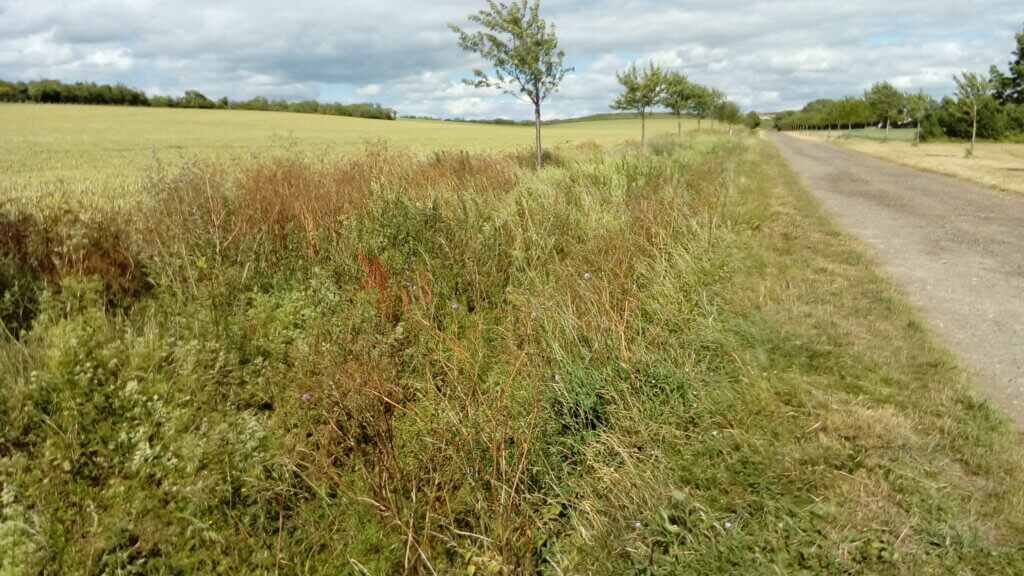
In general, the nature reserves, rightly, get visitors, and often inspire them to get more into nature, but the wider landscape really doesn’t inspire, does it?
I saw hardly anyone on these routes away from a couple of places, except for the last 6km of day 1 as I walked the footpath/cycle route down the River Cam leading into Cambridge city, on a hot Sunday evening, more flowers and insects, more litter including face masks strewn in the undergrowth, more people and a patch of urban rewilding…
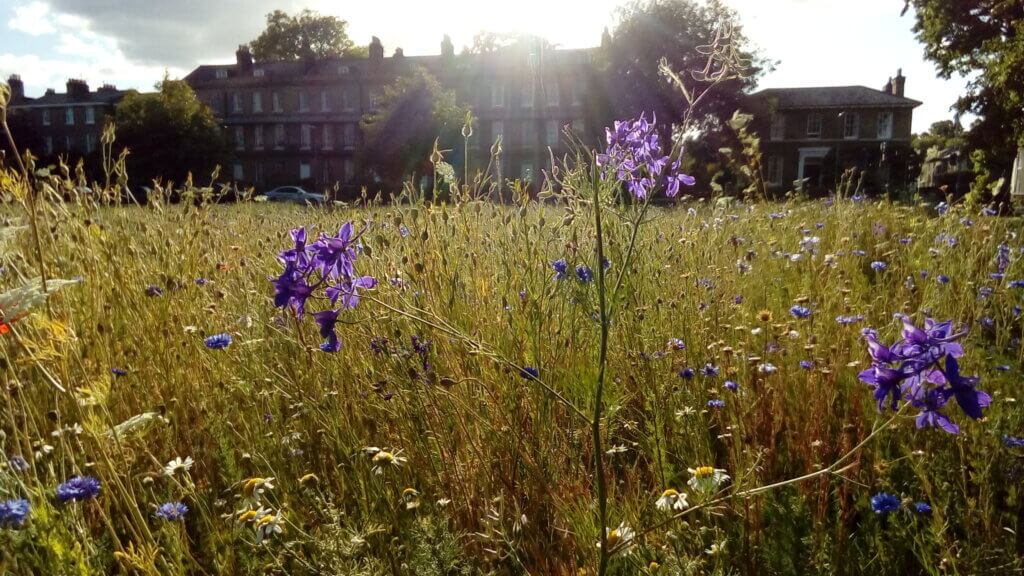
I completed each day’s walk in 13.5hr, my breaks were nearly always in reserves – a 20 minute rest in amenable surroundings, often with a friend bringing me a back-up half litre of water, was regular therapy through the two days. It has left me appreciative of local nature reserves but increasingly worried about the disconnect between farming, wildlife and access, and I fear to the chances of survival of all bar the toughest of species out there in the wheat, barley and beet of southern Cambridgeshire.
My partner thought I should ask friends who couldn’t join me but who had spare cash to donate a tenner to a justgiving page I set up for Birdlife’s albatross work, something loosely connected to my day-job working on southern ocean fishery and seabird data, but I really hate publicising fundraising things…
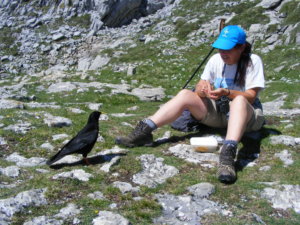
I used to be a biochemist studying human immune system malfunction whilst being a part-time naturalist and conservationist. Then I converted to being an environmental data geek, which is what I do part of the time in a vague attempt to pay the bills. I have been a birder since childhood, and am now the Cambridgeshire county bird recorder, and am also a butterfly and moth enthusiast, with an interest in several other taxon groups including lichens, ants and molluscs, and when not in front of maps or a database can usually be found in woodlands carrying out vital management work, or surveying farmland birds. Louise has written a number of guest blogs here about volunteering, foraging and woodland management – see here.
[registration_form]
I used to work mainly in the arable landscape and did so for over 20 years and yes there was a degree of intensification in that time. Most ELS and HLS farms we worked on were not worth our money for what they supposedly did for wildlife and yes that wildlife was declining in some places badly and diversity declining.
Where I live now in Mid Wales the farmed landscape is pasture almost all for sheep, few flowers other than thistles, even much of the hillsides are grass, bracken or gorse nothing much else, the valley floor grass fields are mainly rye often redrilled every few years, much of it in real terms wildlife deserts but for corvids and Pheasants. In many places our wildlife is either dying or already virtually gone.
Our reserves are good and wonderful places by comparison and of course over the years they have become honey pots as everywhere else is so poor. Is this a problem? May be if more of us went into more of the farmed landscape more of us would notice these massive declines and changes and insist something was done. Not all Europe is like this why the hell are we how have we a nation of nature lovers allowed this to happen?
Yes, thats the problem – the increasing desert of the farmed bits betweenthe honeypots… but its HOw to get naturalists and the general public out there and UNDERSTANDING what has been lost or what it could be like. I am sure it should be time for a massive conversation on landscape, land management, access, appreciation and maintaining sustainable rural livelihoods and food production. I just currently feel that the void between farming, wildlife and access is growing bigger and its not clear to many of us who want to do something about it just how we make any sensible progress right now.
I’m not sure whether it is the public we need to alert and get on board or farmers themselves because it doesn’t have to be like this, RSPB have shown this with Hope Farm, NT also farm in a wildlife friendly way, there are others too Vine House Farm. We need also to encourage farmers to move to a lower input view of farming less oil and derivatives after all the Gov’t says it wants farming to eventually carbon neutral. Even persuading pasture farmers that a mix of animals is better for the habitat or persuading some of the marginal sheep farmers to get out of a farming. Persuade consumers to buy better and less meat, grass fed is far better for us, free range chicken, more sustainable products generally.
We probably need a holistic approach to the whole issue of our farmed environment, food and life generally. Under this gov’t at this time it is unlikely to happen but we need to be trying.
Yes Barry some game shoots encourage more birds but what is the price we ( or our native predators) are paying. Perhaps it is invertebrates and flora we need to encourage, a bottom up approach.
First, well done Louise for covering 30 miles in a day! A useful exersize, if very depressing. Points to the fact that the basic payments for Cross Compliance that are supposed to maintain good environmental condition are not working for wildlife at all. Tons of money wasted.
A friend has been monitoring this local Parish at Ingatestone in Essex since 1960, the area is largely arable with some ancient woodland. 28 bird species have been lost or declined more than 90 percent since then! The most recent losses are cuckoo and mistle thrush. He got so depressed he gave up walking there for a while.
I have found that farms or estates with game sooting (bird cover etc ) are often much better for birds, have you found this?
Probably depends on the bird species
Hi Barry… long time no hear (Hope Sussex is treating you well)… Re shooting.. maybe, but I’m not sure within CB23…. would have said that until a year or two ago that the shooting/bird cover correlation was true but I suspect that there has been an upping of the number of released birds, too and intensification has increased alongside this. Its annoying because I know of local farmers, eg Martin Lines of the Nature freindly farming network (nffn.org.uk) who ARE making it work, but those that are farm in areas with fewer footpaths and are away from the hotspots of development. The first day 30 miles was easy compared to the next days 30 miles…….! the three miles the following day as a wind-down hurt far more………….
Farmed to hell, what wicked words.
your words (I understand farming)I promise you you have not a clue.
I will give you some help on your basic problems.
Farming is more or less a monoculture and is unlikely to alter.
Reason is quite simple contrary to what people might think it is difficult to make a decent return on money invested and the answer to buying lots of really expensive machinery for each crop repeat each crop as that is the important bit but also farmers would have to be equally proficient in each crop then the obvious solution is to grow one crop.
Dennis you assert Louise does not have a clue when you obviously do not have a clue what she does or does not know. If you read her piece she does not discuss the reasons why farms are being farmed so intensively, the economic framework farming exists in and so on. She simply describes what she experienced on a long walk through Cambridgeshire farmland and there is no reason to doubt the accuracy of what she describes – unless you are calling her a liar? Her experience mirrors what many people experience in various parts of the country and is backed up by the data on the status of all sorts of different wildlife such as birds, bees, butterflies wildflowers etc. A countryside devoid of wildlife is what many of us would consider to be hellish and that is the direction we seem to be heading.
Now I imagine that rather few farmers are deliberately intent on eliminating wildlife across the board, many probably don’t care very much (also true of the general public), some care but believe loss of wildlife is a regrettable but unavoidable side effect of farming efficiently and a few care a lot and try to accommodate wildlife as much as they can. But the decisions farmers make about how they manage their land are not made in a vacuum – they reflect a variety of influences including government fiscal and subsidy policies, international trade polices, legal requirements, pressures from supermarkets and, of course, what the public wants in terms of food and how much it wants to pay for it.
As a society we have choices about these things and can choose between a ‘scorched earth’ approach to farming and an approach that provides other ‘public goods’ including plentiful wildlife. They are not necessarily easy choices and there certainly is not a simple switch that can be flicked to reverse the fortunes of wildlife in the farmed environment but to simply say that non farmers don’t know what they are talking about and to pretend that there is not a problem is certainly not a way forward.
Jonathon read everything again Louise complains about monoculture and at least I explain that which she ought to understand.
Jonathon, cannot understand how you could think I called her a liar.
Cannot understand your bad term of scorched earth policy, it is simply monoculture by need.
Please read one of my other comment reply to understand that farmers sometimes get no help from RSPB when top people there, absolutely top people more or less rubbish when offered farmland bird numbers improvement by methods well proved by their own reserves and other managed reserves such as PBO.
There is a sad system of putting all farmers in the same boat and certainly at least one comment does that and maybe Louise comes very close to it.
Dennis – you said she “doesn’t have a clue” which I take to mean she doesn’t know what she is talking about. I simply pointed out that what she did was to describe the dispiriting lack of wildlife encountered during a 30 mile walk through Cambridgeshire. She did not discuss the reasons for this lack.
So it is rather unclear why you feel able to claim that she doesn’t have a clue. If you are saying she was wrong to say that she encountered no wildlife then you are either saying she is blind, stupid or dishonest. If on the other hand you are saying she doesn’t have a clue as to why there was no wildlife then I am extremely curious how you think you know that when she didn’t say anything about the underlying reasons.
Personally I think Louise is right to draw attention to the fact that the countryside is increasingly devoid of wildlife and to deplore the fact. As someone who appears to like wildlife I would have thought you would deplore it too. Whether you like it or not farming is certainly deeply implicated in the loss of wildlife and simply telling people they don’t have a clue whenever they mention it doesn’t change the fact.
It may not be simple or easy finding a way in which wildlife can thrive within a landscape in which farmers can make a living but there are certainly enough examples to make clear that it is not inevitable that there should not be a solitary scarlet pimpernel within many square miles. If we wish to continue to enjoy a diversity of wildlife in this country it is vital that we get to grips with this problem and simply asserting that anyone who mentions the dearth of wildlife on much farmland ‘doesn’t have a clue’ is not a way forward.
Sorry Dennis, RSPB and others have shown you can make a good living and be wildlife friendly. The basic truth is that most farmers either don’t know or don’t care about wildlife if they cannot shoot it. That may sound harsh but is far too often true, I wish it wasn’t.
Paul,I think you have believed a lot of dodgy tales. Facts below.
Anyone given the money to buy a farm can do things others cannot.
We would all like to be handed the money from members.
First thing the RSPB did was contact a local farmer to do what they couldn’t and give him the big share of the profits and over a period of years that I looked at their accounts I was not impressed.
Farming with a mortgage payment each year is more challenging.
Well when you talk about wildlife let me give you a instance.
Campaigned for a long time for the RSPB to try and get a small acreage in each parish of wild bird mixture and the response was worse than negative suggesting that insects were needed.
Now surely there would be more insects on a wild bird mixture than on any other crop.
Of course whether farmers would do it is another matter but my guess is a proportion of paid the equivalent of what other crops paid them they would.
Obviously my thoughts on the top people at RSPB are not printable!.
Probably the shooting part is often pheasants whereas my concern is smaller farmland birds
For the truth of what Louise is saying, you need only to type in to your search engine ‘Beeswax Dyson Farming’.
It will take you straight to the farm, you can smell the bullshit.
It all sounds wonderful but the photos give the lie to the text.
Mr Dyson is busy vacuuming up vast swathes of Lincolnshire. Ok, so it wasn’t great before he bought it, but at least it was growing food.
Next time you hear a farmer talking about the importance of food security or how we can’t afford to turn fields into reserves, point them to this website.
The site boasts of being Guardians of the Land while showing photos of industrial sites built on grade 1 farmland, while boasting about the amount of crops they grow specifically for fuel. It boasts about putting up 100 owl boxes while also boasting about ‘reducing weed burden’. Yes Louise, you see, your wanted weeds are just a burden!
Less weeds = less voles = owls. Simples.
Drive to Boston from Revesby on the B1183 past Carrington and you may see a wildflower strip that was planted next to a dyke and roadside. (Although not so much in evidence as last year). I think this is more for human benefit than for the wildlife, since it’s not in evidence elsewhere.
You may not notice where some beautiful mature trees were cut down alongside the road to be replaced by a few saplings. No doubt for ‘safety’.
The website will tell you of their woodland management. The photo they choose to illustrate the point shows that a farmers view of woodland is a little different to that of the rest of us. Bland lollipop stalks grown to make it easy to mow and strim underneath.
This is modern farming, this illustrates Louise’s blog perfectly, even down to their permissive footpaths where you will see……nothing.
Wildlife is an anathema to the modern farmer, it’s not needed nor wanted. It just gets in the way.
Agricultural vandalism is alive and well in Lincolnshire.
There will be a farmer reading this who will say it’s just someone else having a pop. That older farmer will remember owls as friends that kept his rodent population in check, of birds that ate his slugs and leather jackets. The bats and hirundines that ate insects. I still know some farmers like this, even in Lincolnshire. But their families have moved on, they are getting older and will eventually have to sell the farm. Please Mr Farmer, if you sell to Dyson, don’t ever go back for a look, it will break your heart.
Oh yes, just had a look at that site, thanks Paul Fisher. To typical of the eastern england arable estate boys. Renewables aka hectares of maize to knacker the soil, Woodland management – a programme of felling, thinning and replanting – why? better woodland management rather than replant wherever possible… so much bullshit. There are plenty other example like the one you gave, Paul and they instill little hope in me. I agree that farms like Hope farm, the NFFN, etc already do plenty to start influencing, but the farmers will always peddle the line that production and profit are priorities. Arguably they should be, but there is always more than one way to skin a cat, metaphorically speaking, and this constant ramping up of intensity with effects on soil quality and wildlife is the narrow-visioned approach many farmers continue with.
Paul how sad you have to resort to one farmer, who is not even what most farmers are like.
We live in a weird world where those who have never farmed know more than the farmers.
Those who have never farmed cattle with Badgers on their farm know it all and farmers know nowt.
Louise have you any idea of the number of seeds, all turning into weeds that would accumulate after several years of no spraying, years ago it had to be controlled by leaving fallow every few years.
Of course garden sprays are best sellers but that seems different.
Dennis, come off it. There are many farmers like Dyson. We have a field on the way to Louth that is fully a mile long! How many hedgerows were grubbed up to make that? How much wildlife do you think that field supports? Across the road woodland was grubbed up to plant Christmas trees for gods sake.
And Dennis, why do you think it is that a vacuum manufacturer is buying up all this land? Because he loves the great outdoors?
Wouldn’t be down to the money that his friends take from us to give to him would it?
Paul how sad you have to resort to one farmer, who is not even what most farmers are like.
We live in a weird world where those who have never farmed know more than the farmers.
Those who have never farmed cattle with Badgers on their farm know it all and farmers know nowt.
Louise have you any idea of the number of seeds, all turning into weeds that would accumulate after several years of no spraying, years ago it had to be controlled by leaving fallow every few years.
Of course garden sprays are best sellers but that seems different.
Sorry, Dennis, but your constant defence of the indefensible is very puzzling. I suspect you are desperately out of touch with the trends in modern farming.
The GWCT have done remarkably well at Royston ( over the county boundary in Huntingdon),
greatly increasing Grey Partridge numbers, alongside good farming.
Their Conservation Headlands address many of the problems noted by Louise, sadly not enough
farmers are sufficiently interested, or do not think it worth the coin,even though wild partridge
shooting commands a premium.
Mr Dyson, believe it or not ,is a keen shooting man , which proves my point.
If you mean a farm at Therfield nr Royston (Herts). it is purely independent and nothing to do with the GWCT, yes, that family used to have links to GWCT but not for some years……….I know because I know that farmer quite well (as I know many farmers and quite a lot of their land). And he does a fair bit to promote good practice, too…….
Yes, that’s the one.
Looking it up, the GWCT project ended in 2010, time flies, it’s good the bloke is still farming
responsibly.
The squillions of hectares of monotoculture aren’t some kind of perverse misbehaviour by farmers, none of whom wake up of a morning and think “I’ll grow some wheat and grateful nature lovers will queue at the gate to buy it”. When was the last time anyone went out and bought a pound of wheat or two ounces of oilseed rape or a sugar beet?
The market for wheat and oilseeds and sugar is driven by the value chain that turns them into products that make us fat and diabetic and provide a ready market for pharmaceuticals to keep us staggering on well past our expiry date. So until consumers start rejecting the idea that cereals, bread, pastry and cakes are good, and eat more meat and leaves then the market will continue to determine the uniform impurity-free commodity crops that make up the lion’s share of what farmers grow. And they had better do it fast before the fake food purveyors make any more inroads into manipulating our diet into one of pea-protein and chemicals. In a flaccid bun, FFS.
The intensification experiment running since WWII has now served its purpose and shown its deficiencies and we need the efforts of the likes of NFFN and the regenerative agriculture movement to get our land back into better shape. IMHO one of the effective ways we could do this, that would benefit the eastern counties in particular, is to provide long-term financial support for a return to mixed farming.
Filbert – as you know, much home grown cereal goes into animal feed, so biscuits for cattle! I find it difficult to find reliable figures on how much – does anyone have any candidates for accurate figures?
Regarding a (hopefully reliable) source for how much home-grown cereal goes into animal feed this document, produced by the four UK country agencies, provides some figures in the cereals section of Chapter 7:
https://www.gov.uk/government/statistics/agriculture-in-the-united-kingdom-2019
MArk – so it does, thank you very much that is what I needed.
‘IMHO one of the effective ways we could do this, that would benefit the eastern counties in particular, is to provide long-term financial support for a return to mixed farming.’
Spot-on.
Incentivising the reintroduction of mixed farming, in particular mob grazed grass/clover and herbal leys into the rotation across big swathes of the SOM depleted eastern farmlands would be win-win and a wise use of public monies. The capital investment required is substantial, but so are the potential benefits.
The bean counters at Defra need to do their homework and get their pencils sharpened – anyone suggesting the use of income foregone calculations should be placed in the stocks.
Summary & link:
https://www.foodandfarmingfutures.co.uk/Library/content/Detail.aspx?ctID=ZWVhNzBlY2QtZWJjNi00YWZiLWE1MTAtNWExOTFiMjJjOWU1&rID=MjM0NTI=&sID=MQ==&bckToL=VHJ1ZQ==&qcf=&ph=VHJ1ZQ==
It all looks a bit bleak. Out East we have Hobby Farms, Hobby estates, Organic farms and environmental groups so its not quite so bleak
Re “Where there are ditches or hedges alongside paths, the plants growing are usually nettle, bramble, coarse grasses such as False oat grass, Sterile brome, occasional perennial rye, with small patches of mallow and hedge bedstraw clinging on….”
Its the result of not cutting or grazing and removing the nutrients. rewilding? I find false oat grass is determined to take over the world with its tussocks, the tussocks are a clever way of building up nutrients. . It has succeeded in blanketing a lot of the meadow where we withdrew grazing and even winter grazing now does not reduce it. Creeping thistle does ok growing with it and the next step is woodland as trees suckerout into it.. Those tussocks must have a value but nothing much else grows.
yes, the field edges vegetation are a reflection of increased nitrogen, from farming and sometimes from vehicles it the verge is also near a road….and not mowing, or mowing but not removing the arisings…. and it is the same on river banks, and the vegetation gets poorer and more rank year on year
In this part of Suffolk we’re witnessing the continued loss and infilling of ancient field boundaries. Laws protecting ancient hedges are ineffective as hedges are flailed to the ground, regrowth is ‘accidentally’ sprayed and local authority land drainage consent given to fill in ditches so field sizes can be increased. It‘s appalling that this still happens in the 2020s. It‘s a loophole being exploited by certain farmers and land drainage contractors without comeback from the RPA or local authorities.